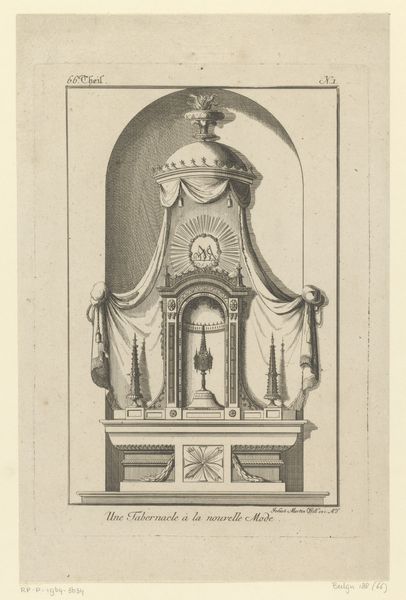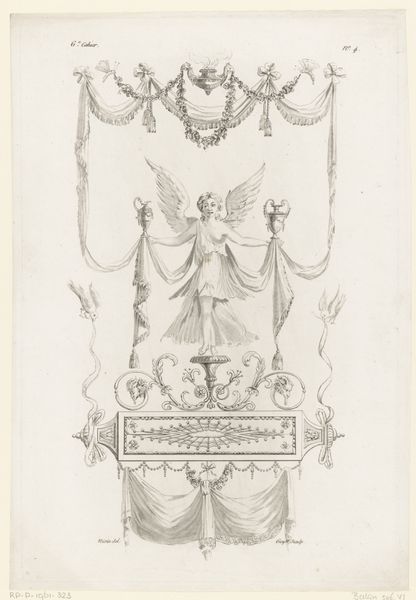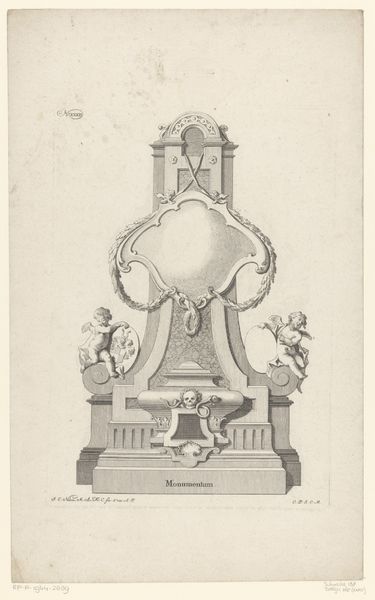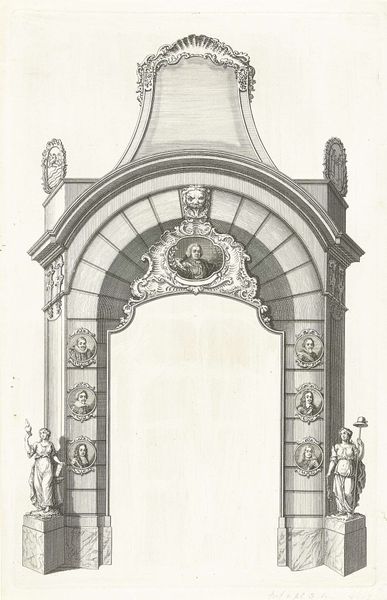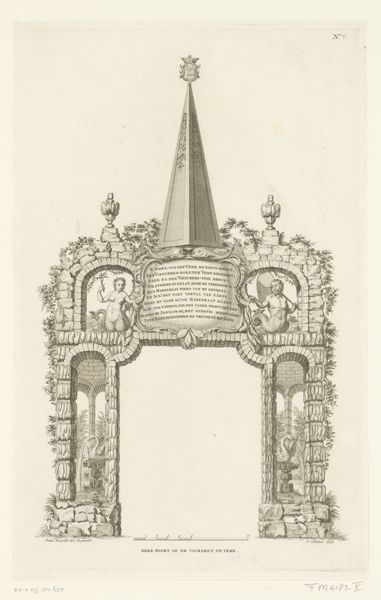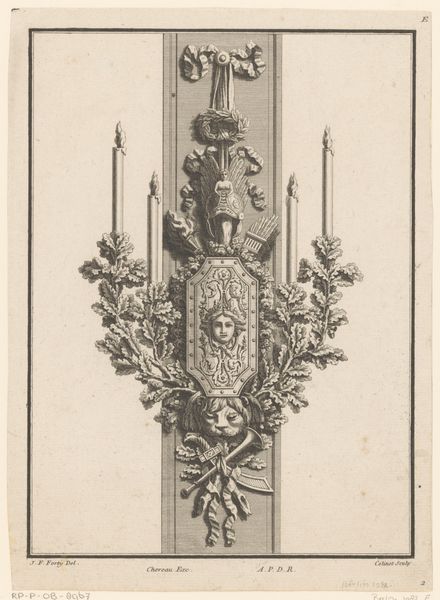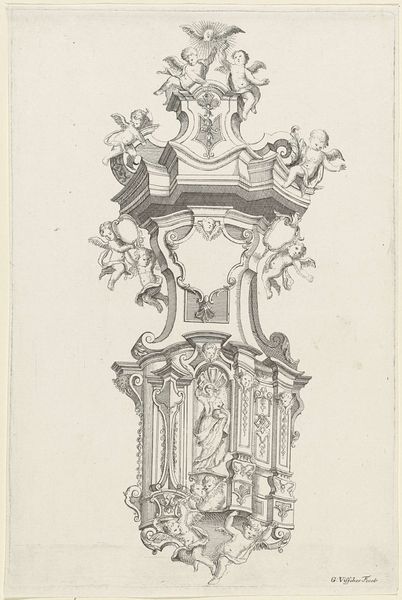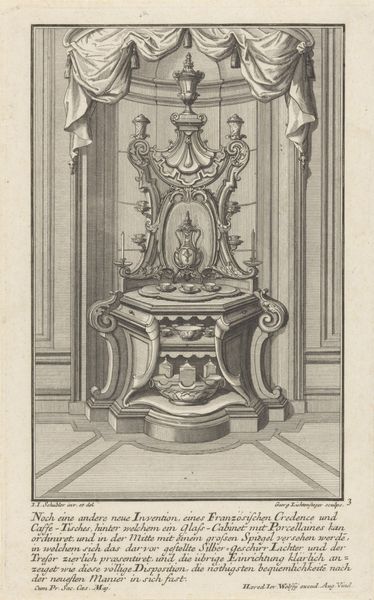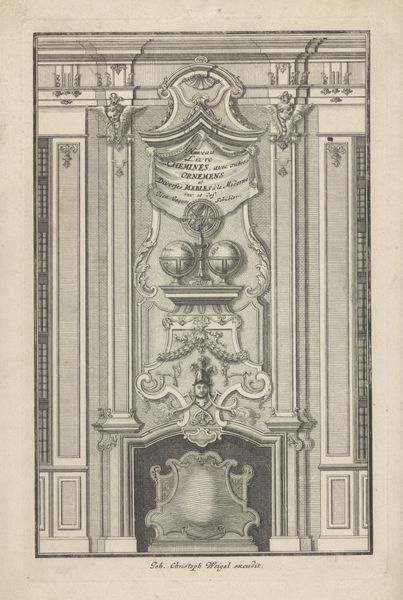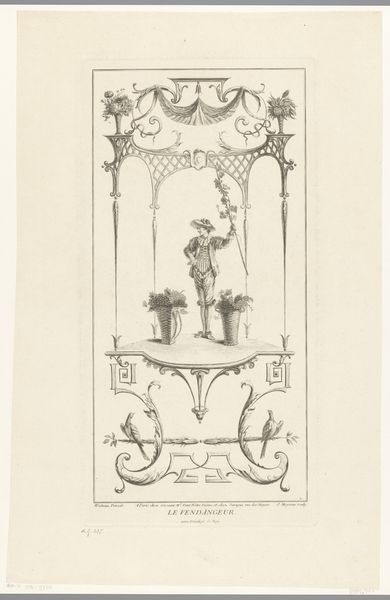
Erepoorten bij de intocht van Willem V te Veere (Nr. VIII), 1766 1766 - 1767
0:00
0:00
Dimensions: height 379 mm, width 234 mm
Copyright: Rijks Museum: Open Domain
Curator: This print, dating back to 1766-1767, depicts a triumphal arch designed by Gerard Sibelius. It's titled "Erepoorten bij de intocht van Willem V te Veere (Nr. VIII)," documenting William V's entrance into Veere. Editor: The immediate impression is one of restrained celebration, almost a diagram of pomp. It feels meticulously planned and symbolic, but strangely bloodless. Curator: Precisely. Triumphal arches like these were temporary structures, often constructed of wood and canvas. Their ephemeral nature contrasts sharply with the enduring message they were intended to convey: power, legitimacy, and the continuity of rule. Consider the symbolism of arches themselves; portals to new eras. Editor: Absolutely, but looking closer at those classically inspired figures flanking the archway, they don't convey living figures. What meanings might they hold? Curator: On one level, this print references classical antiquity through its figures and geometric architectural elements. On a deeper level, such arches were vehicles for propaganda, visually reinforcing a particular narrative and shaping public perception of the Prince. The winged figure at the apex could evoke notions of heavenly sanction or divine endorsement, subtly intertwining religious legitimacy with secular power. Editor: Yes, it really presents power and legitimacy in controlled doses. And consider the choice of medium. An engraving allows for such fine detail, rendering the arch's intricate decorations with striking clarity. It transforms a temporary structure into a permanent record, disseminating the image of power far beyond the event itself. Curator: That speaks to how Baroque artwork like this becomes less about personal expression and more about cultural identity and visual communication in historical narratives. It solidifies memory in a concrete image. Editor: I agree. Looking back on this print now, it underscores how carefully crafted and visually loaded such public displays were. It was more than just decoration. Curator: It really makes us look at civic ritual, its meanings, and how such public ceremonies help unite people into an aligned entity. Editor: Quite, and in the same breath, how that power, at all costs, has a calculated intent.
Comments
No comments
Be the first to comment and join the conversation on the ultimate creative platform.

